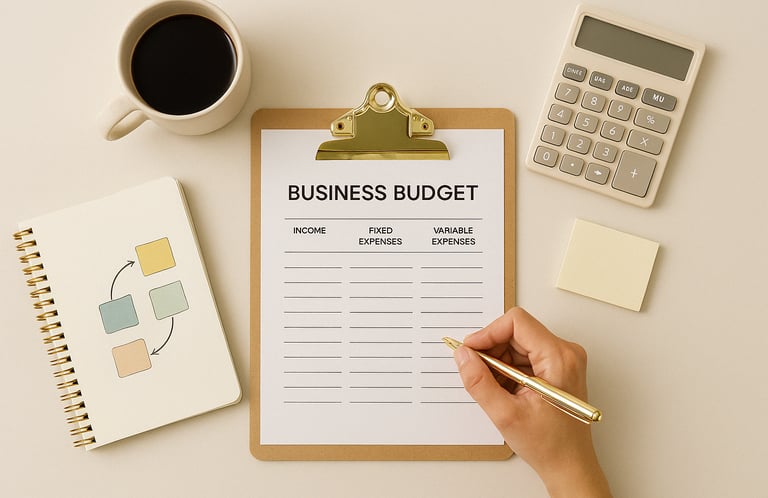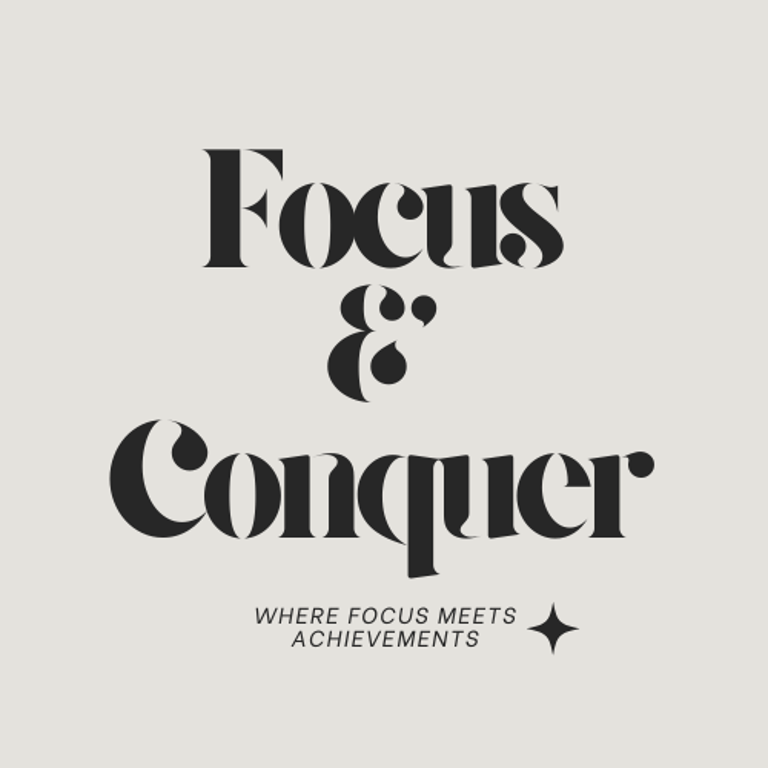How to Create a Business Budget That Actually Works (Even If Your Income Fluctuates)
Tired of budgeting systems that don’t fit your business? In this post, I share the exact step-by-step framework I use to create a flexible, intuitive budget that supports growth—without stress. Perfect for creative entrepreneurs and small business owners who deal with inconsistent income, this guide includes visual tools, monthly planning tips, and access to your free Financial Starter Kit to begin building your own budget today.
4/15/20253 min read


How to Design a Business Budget That Actually Works
For the longest time, I avoided making a budget for my business.
Not because I didn’t think it was important, but because every time I tried, it felt too rigid. Too overwhelming. Too "corporate." I wanted something simple, visual, intuitive—something that actually worked with how I live, plan, and grow.
So I created my own system. And today, I want to show you how to build a business budget that supports you—not stresses you out. One that helps you make confident decisions, track your progress, and still leaves space for life to happen.
Why Traditional Budgets Often Fail Entrepreneurs
Most budgeting advice out there is made for corporations or people with steady paychecks. But as entrepreneurs, our income can fluctuate wildly from month to month. That unpredictability can make budgeting feel pointless—or worse, paralyzing.
Here are a few common mistakes I see:
Overplanning: Trying to predict every single dollar when income varies.
Underestimating costs: Especially recurring tools, software, and taxes.
No flexibility: Leaving no room for spontaneous investments or experiments.
Using tools that don’t reflect how we think. If a spreadsheet feels cold, you won’t use it.
The Mindset Shift: Budgeting as Empowerment
Instead of thinking of a budget as restriction, think of it as permission. A budget is your way of saying:
“This is what matters most to me.”
“Here’s how I’m going to grow.”
“I’m in control of my choices.”
A good budget doesn’t just help you cut back—it helps you invest intentionally.
Step 1: Know Your Numbers (No Judgment)
Before you can budget, you need to understand what’s currently happening.
What’s your average monthly income? Look at the past 3–6 months.
What are your fixed costs? Subscriptions, software, rent, contractor fees.
What are your variable costs? Ads, launches, trainings, supplies.
What’s your minimum to break even? (This is your baseline goal.)
Use your own data. No guessing. The more grounded you are, the better your decisions.
Step 2: Use Buckets Instead of Categories
Instead of 30 line items, group your money into a few key buckets:
Owner Pay: How much you want to pay yourself.
Business Expenses: Everything that keeps your business running.
Taxes: Set aside 20–30% of income.
Growth + Profit: Savings, investments, courses, coaching, future team.
This keeps things visual and flexible. You can use color coding or even a printable tracker (like the one in my Financial Starter Kit).
Step 3: Create a Monthly Budget Snapshot
Once you have your buckets, create a monthly plan. You can use a spreadsheet, a Google Doc, or even a page in your planner.
Answer these:
What’s my income goal this month?
What’s my minimum to cover essentials?
What am I intentionally spending on?
What am I pausing or avoiding?
Keep it simple and review it every week during your money check-in.
Step 4: Build in Flexibility
Budgeting for entrepreneurs has to be fluid. You might have a $6k month followed by a $2k month. Instead of shaming yourself, prepare for it.
Tips:
Create a "buffer account" with 1–3 months of minimum expenses.
Set percentage-based budgets. (Ex: 30% of income goes to expenses.)
Review and revise monthly.
This way, your budget adjusts to reality, not perfection.
Step 5: Make It Visual (So You Actually Use It)
The more you enjoy looking at your budget, the more likely you are to stick with it.
Ideas:
Use a dashboard or tracker with graphs.
Add visual goal markers ("When I reach X, I upgrade Y").
Print it and keep it near your workspace.
Use colors that calm or motivate you.
Remember, this is YOUR system. Make it feel inspiring, not sterile.
How My Business Changed With This Budget
Before I implemented this system, I was always guessing. Some months I over-invested. Others I held back out of fear. I constantly felt out of sync with my money.
Now?
I know my baseline.
I plan launches with clarity.
I give myself permission to rest.
I invest with intention, not impulse.
Having a working budget gave me more than numbers. It gave me peace.
Want to Build Yours?
I created a simple template inside the Financial Starter Kit that walks you through all these steps.
It includes:
A printable budget tracker
Bucket-based budget template
Monthly snapshot prompts
Space for goals + reflection
Grab it free and start creating a budget that finally fits you.
Final Words
You don’t need a finance degree to feel confident with money. You just need a system that works for the way you run your business.
Your budget isn’t about controlling you—it’s about supporting your growth.
Start small. Start soft. Start today.
With clarity and intention,
Focus & Conquer
